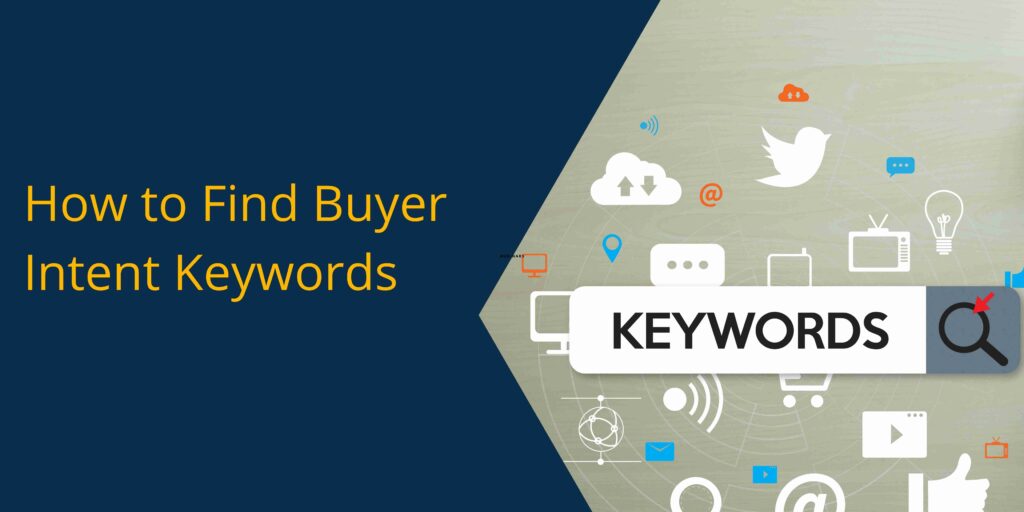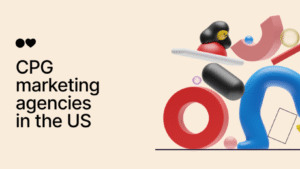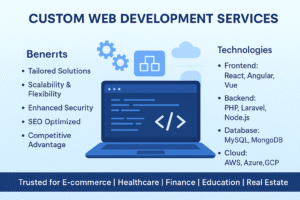In today’s hyper-competitive digital marketing landscape, buyer intent keywords are your secret weapon for boosting conversions. These keywords don’t just attract traffic—they attract the right traffic. Whether you’re running an eCommerce store, SaaS platform, or a B2B website, targeting high-intent search terms can dramatically improve your ROI.
In this article, you’ll learn why buyer intent keywords convert better and exactly how to find them—using tools, strategies, and expert tips that align with Google’s latest SEO guidelines.
What Are Buyer Intent Keywords?
Buyer intent keywords (also known as commercial intent keywords or transactional keywords) are search terms used by people who are close to making a purchase. Unlike informational keywords that signal curiosity, buyer intent keywords indicate that the user is ready to take action—be it buying, booking, subscribing, or contacting.
Examples:
- Informational: “Best laptops in 2025”
- Buyer intent: “Buy MacBook Pro M4 online”
These high-converting keywords reflect purchase intent, making them gold for marketers looking to improve their conversion rates and sales funnel performance.
Why Buyer Intent Keywords Convert Better
Here’s why these keywords outperform others:
1. Closer to the Bottom of the Funnel
People searching for buyer intent keywords are typically at the decision-making stage. They’ve already done their research and are now ready to buy.
2. Higher Conversion Rates
Because of their high intent, these users are more likely to take action. Targeting these keywords helps you maximize conversion rates, not just traffic.
3. Better ROI on Paid Campaigns
Using buyer intent keywords in Google Ads and PPC campaigns helps reduce wasted ad spend. You attract users who are ready to buy, not those just browsing.
Types of Buyer Intent Keywords
To properly optimize your content, it’s important to understand the different types of buyer intent keywords:
| Type | Example | Intent |
|---|---|---|
| Transactional | “Buy noise-canceling headphones” | Purchase |
| Navigational | “Nike official store” | Brand-specific shopping |
| Commercial Investigation | “Best SEO tools for small business” | Comparison before buying |
| Local Intent | “Plumber near me” | Local service intent |
How to Find Buyer Intent Keywords
Here’s a step-by-step process to discover and implement the best buyer intent keywords for your business:
1. Start With Keyword Research Tools
Use tools like:
- Google Keyword Planner
- Semrush
- Ahrefs
- Ubersuggest
- AnswerThePublic
- Moz Keyword Explorer
Filter keywords using:
- Commercial or transactional intent filters
- CPC (Cost-per-click) values (higher CPC = higher intent)
- Competition level
✅ Pro Tip: Use Google’s “People also ask” and “Related searches” sections to spot emerging buyer intent phrases.
2. Look for Action-Oriented Modifiers
Words that signal buying intent include:
- Buy
- Discount
- Cheap
- Best
- Top
- Near me
- Pricing
- Deals
- Trial
- Subscription
Example:
- “Best CRM for small business”
- “SEO tools pricing plans”
- “Buy standing desk with fast shipping”
3. Analyze Competitors
Study what keywords your top competitors rank for using Semrush or Ahrefs. Look specifically at the bottom-of-funnel content like product pages, landing pages, and case studies.
4. Use Google Search Console
Google Search Console shows what queries are already bringing traffic to your site. Identify and amplify high-CTR queries with purchase intent by optimizing related content or creating targeted landing pages.
5. Leverage Long-Tail Keywords
Long-tail keywords are specific and often show strong buyer intent.
Examples:
- “Buy Samsung Galaxy S24 Ultra with trade-in”
- “Affordable SEO services for dentists in Dallas”
- “Best keto meal delivery subscription 2025”
These keywords usually have lower competition and higher conversion potential.
How to Optimize Content for Buyer Intent Keywords
Finding the right keywords is only half the battle. Here’s how to turn them into content that converts:
✅ Create Intent-Matched Content
- Use landing pages for high-converting keywords.
- Write product reviews, comparison articles, and case studies that match commercial investigation keywords.
✅ Use Clear CTAs
- Encourage actions like “Buy Now,” “Get a Free Quote,” or “Start Free Trial.”
- Position CTAs after key benefits are listed to encourage clicks.
✅ Optimize Meta Titles & Descriptions
Include buyer intent keywords in your:
- Title tags
- Meta descriptions
- Headings (H1, H2)
✅ Improve Page Speed and Mobile UX
Google considers user experience. Make sure your pages load fast and work seamlessly on mobile to maximize conversions.
Final Thoughts: Make Buyer Intent Keywords Your Best Friend
If your current SEO strategy only targets informational queries, you’re likely missing out on serious revenue. Buyer intent keywords convert better because they align directly with users ready to act. By identifying and targeting these keywords effectively, you’ll drive more qualified traffic, reduce bounce rates, and increase sales.
Start with solid keyword research, match the right content to the right intent, and stay compliant with Google’s SEO best practices. Whether you’re using Google Ads or organic SEO, buyer intent keywords are essential for growth.
FAQs
Q: What is a high buyer intent keyword?
A: It’s a keyword that signals the user is ready to take action—such as buying, booking, or subscribing.
Q: How do buyer intent keywords improve conversion rates?
A: They attract users who are further down the funnel and more likely to complete your desired action.
Q: Are long-tail keywords good for buyer intent?
A: Yes. Long-tail keywords often have lower competition and clearer intent, making them excellent for conversions.
Ready to Convert More Visitors?
Use our free keyword research template or contact our SEO experts to get a list of buyer intent keywords tailored to your business niche.



